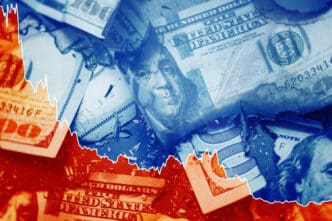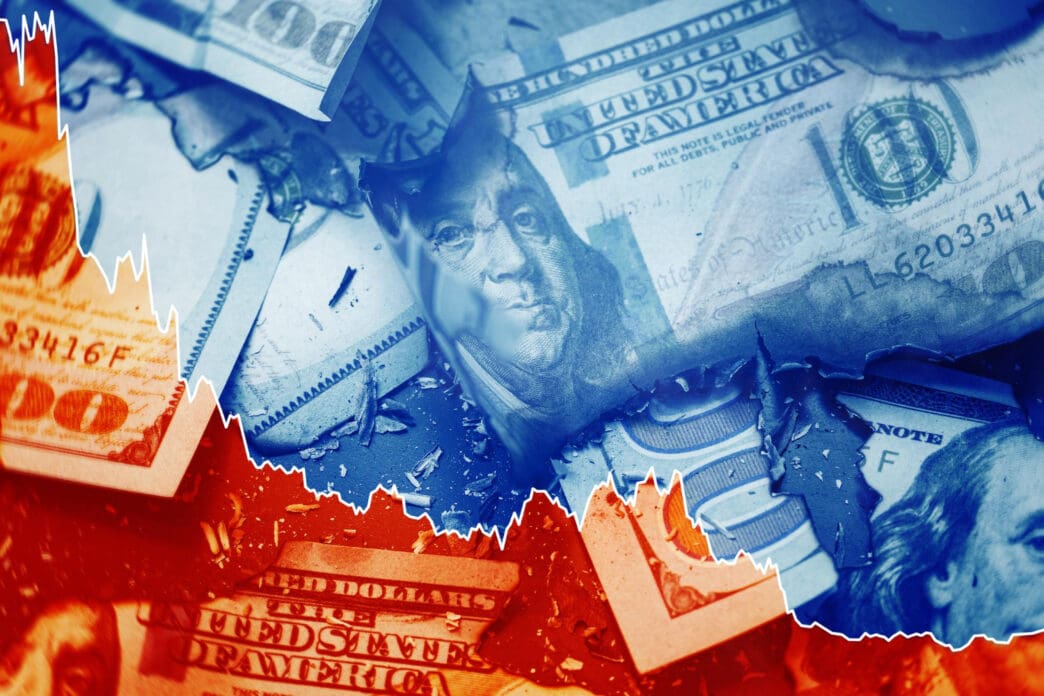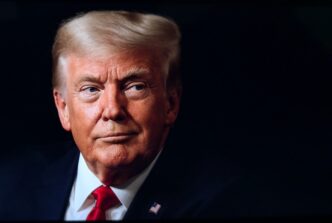Executive Summary
- President Trump is highlighting a CBO analysis projecting his administration’s tariffs could reduce the federal debt by $4 trillion over the next decade.
- The CBO’s $4 trillion tariff revenue projection is subject to significant caveats, including potential negative economic impacts and the longevity of the tariffs, which were not fully factored into the analysis.
- The projected debt reduction from Trump’s tariffs is largely offset by his “One Big Beautiful Bill,” which is expected to increase federal debt by an estimated $4.1 trillion.
The Story So Far
- President Trump is actively promoting recent CBO projections that his administration’s tariffs could reduce the federal debt by $4 trillion over the next decade, framing this as a successful policy. However, this anticipated revenue is significantly qualified by the CBO’s own caveats, which do not account for potential negative economic impacts like inflation or a weakened economy, and the actual debt reduction is largely offset by the estimated $4.1 trillion increase in federal debt from his “One Big Beautiful Bill” domestic policy agenda.
Why This Matters
- While President Trump emphasizes CBO projections showing his tariffs could reduce the federal debt by $4 trillion, this figure is highly conditional, relying on the longevity of the levies and not accounting for potential negative economic impacts like increased inflation or a weakened economy. Crucially, this projected debt reduction is effectively offset by President Trump’s “One Big Beautiful Bill,” which is expected to add an estimated $4.1 trillion to the federal debt over a similar period.
Who Thinks What?
- President Donald Trump asserts that his administration’s tariffs are a successful policy, citing the CBO’s projection of a $4 trillion reduction in federal debt as evidence that “the money is flowing in.”
- The Congressional Budget Office (CBO) and policy analysts project a $4 trillion reduction in federal debt from tariffs but caution that this is subject to significant caveats, including the longevity of current levies, potential negative economic impacts not factored into the analysis, and the offsetting debt increase from other administration policies.
President Donald Trump is frequently highlighting a recent Congressional Budget Office (CBO) analysis that projects his administration’s tariffs could reduce the federal debt by $4 trillion over the next decade. This figure, an increase from previous forecasts, is being presented by Trump as evidence of a successful, albeit controversial, policy platform. However, the anticipated revenue is subject to several significant caveats, including economic impacts not factored into the CBO’s analysis.
Since the CBO report’s release on Friday, President Trump has referenced it in multiple public remarks and on Truth Social. During an Oval Office event on Monday, he stated, “The tariffs came in at $4 trillion. The CBO, they just announced it. I told them that was going to happen, but they refused to give us credit for it. Now they’re giving us credit because the money is flowing in.”
CBO Projections and Key Caveats
The CBO’s latest estimate, based on tariffs imposed as of August 19, projects a $3.3 trillion reduction in the federal deficit between 2025 and 2035, alongside an additional $700 billion decrease in interest costs, totaling $4 trillion. This is an increase from the CBO’s early June estimate of roughly $3 trillion.
However, the actual revenue realized from these tariffs depends on several critical factors. These include whether the current levies remain in place until 2035 and how the nation’s economy responds to higher tariffs. The CBO’s analysis notably did not account for the potential economic impacts, such as increased inflation or a weakened economy, which could in turn reduce federal revenue.
Marc Goldwein, senior policy director for the Committee for a Responsible Federal Budget, noted that while the revenue generated so far has exceeded expectations, its sustainability is tied to economic consequences. He suggested that a significant increase in inflation or a recession could lead to the reversal of these tariffs, either wholesale or through trade deals.
Policy Changes and Offsetting Debt
Several developments could impact the CBO’s projections. President Trump has announced changes not incorporated into the analysis, such as the upcoming suspension of tariff-free entry for products under $800. Concurrently, a federal appeals court is reviewing whether Trump overstepped his legal authority in imposing many of these tariffs, which could result in some being undone.
Furthermore, President Trump has not publicly mentioned that his “One Big Beautiful Bill,” a domestic policy agenda signed into law last month, is expected to increase the federal debt by an estimated $4.1 trillion between 2025 and 2034. This projected increase effectively offsets the anticipated revenue from his tariffs.
Evolution of Tariff Policy
Since taking office, Trump has implemented tariffs on a wide array of goods and countries. These include increasing tariffs on most Chinese goods by 30%, on automobiles and car parts by up to 25%, and on most imports of steel and aluminum by 50%. These levies are generally expected to increase consumer prices for various goods, though Trump maintains that foreign governments will bear the cost.
The tariff rates have been subject to frequent modification. For instance, after initially imposing a minimum 20% tariff on most Chinese goods in April, Trump quickly escalated rates to 145% in response to Chinese retaliation. Following bilateral trade negotiations, both countries agreed to lower rates, with the U.S. charging a minimum of 30% on Chinese goods, a rate set to hold through November. However, Trump recently stated his readiness to hike tariffs on Chinese goods as high as 200% if China does not increase its shipments of rare-earth minerals to the U.S.
Regarding the allocation of tariff revenue, President Trump has considered distributing at least some of it to Americans in the form of rebate checks. However, Treasury Secretary Scott Bessent indicated last week that the funds would instead be directed toward reducing the national debt. Treasury Department data shows that tariffs and other customs duties have generated nearly $156 billion in revenue so far this year, through August 22.
While President Trump continues to champion his tariffs as a substantial mechanism for reducing the federal debt, the CBO’s $4 trillion projection comes with significant qualifications. The actual financial impact hinges on the longevity of these policies, their broader economic consequences, and ongoing legal challenges. Moreover, the projected debt reduction from tariffs is largely counterbalanced by the expected debt increase from the administration’s other legislative initiatives.








